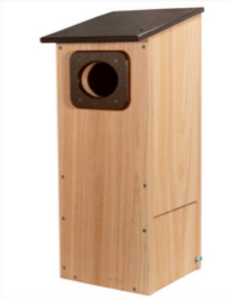- 2024 Native Trees
- >
- Rain Barrels and Wildlife House
- >
- Cedar Wood Duck Box
Cedar Wood Duck Box
SKU:
$85.25
$85.25
Unavailable
per item
This beautiful hand-made Wood Duck box is made of Cedar Wood with a recycled Poly Lumber roof. This box has been proven successful in being an ideal house for wood ducks to call home during nesting . The open ventilation holes keep the box from overheating in the summer months. It features all screwed construction using stainless steel screws and routed edges. The side-opening door offers easy access for cleaning. Simply mount the house by using the mounting screw provided along with our instruction and information guide.



